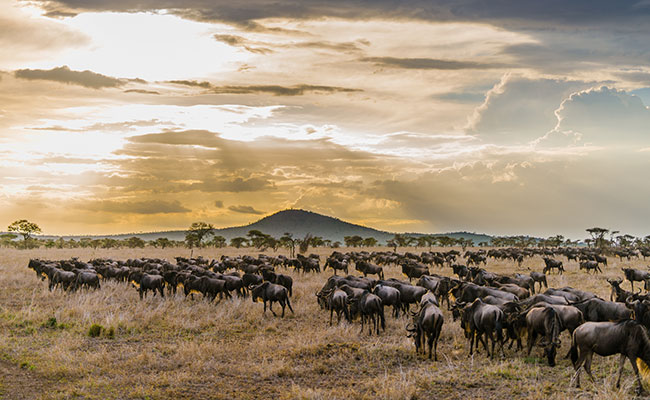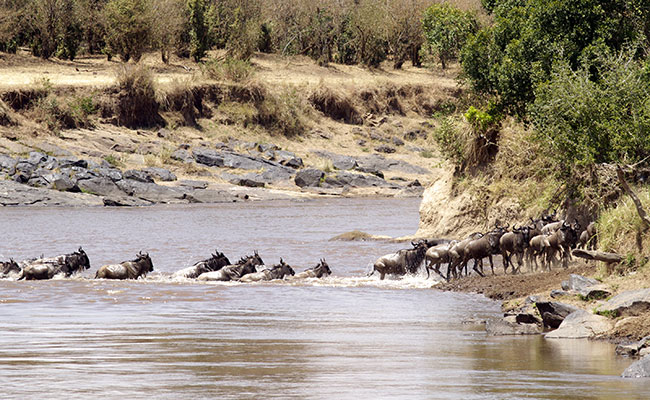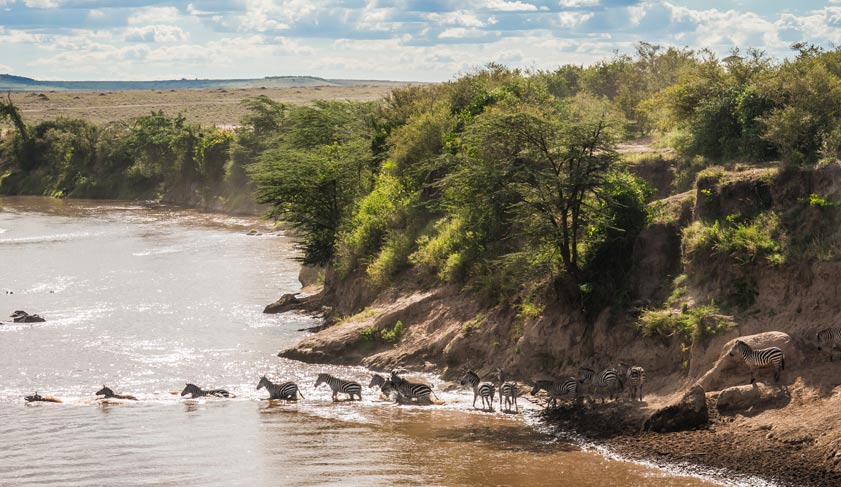This website uses cookies so that we can provide you with the best user experience possible. Cookie information is stored in your browser and performs functions such as recognising you when you return to our website and helping our team to understand which sections of the website you find most interesting and useful.
The Great Migration
Without a doubt, the annual wildebeest migration is one of the most spectacular wildlife displays in the world. Over a million wildebeest and hundreds of thousands of zebras and antelopes thunder across the plains in search of nutritious rain-ripened grasses.
Click on the link here to see the ultimate Safari with G Adventures -or explore the link below to win your dream adventure.

About The Wildebeest Migration
Columns of snorting, dust-kicking animals can stretch 40 kilometres long. Of course, wherever you find large groups of game, predators are never far behind. Lions, cheetahs, hyenas and leopards enjoy the benefits of vast numbers of prey crossing their territories.
The herds face many dangers along the 2,900-kilometre clockwise circuit between the Serengeti National Park and Masai Mara National Reserve. However, the ancient herd instinct to move is so strong that no drought, gorge or fast-flowing crocodile-infested river can ever hold them back. Whilst the expression ‘safety in numbers’ holds true, an estimated 250,000 wildebeest perish during the journey. However, around 400,000 new calves take their place in the great cycle of life and death.
There is no way to accurately predict the timing of the migration as it depends on weather cycles. However, experience tells us that migration usually begins in the Serengeti National Park after calving season in February to March. By April into May, the food supply is exhausted, and herds begin to migrate towards the grassier plains. These lie to the west and north of the Serengeti. By June, the massive herds gather at the south side of the Grumeti River before fording its crocodile-infested channels and pools.
The survivors then continue north into Kenya, spreading across the plains before crossing the fast-flowing Mara River. There are often great scenes of panic and confusion at this crossing as strong currents sweep away exhausted animals, and hungry crocodiles lie in wait for others. Cows can easily become separated from calves during massive stampedes over banks into the water.
The plains of the Masai Mara National Reserve are usually covered in wildebeest and zebra from September through November. The cycle begins again after the short rains of November, when the herds head south to the southern Serengeti and Ngorongoro Conservation Area.


Best time to see The Great Migration
The great migration is a cycle which occurs year-round, but as stated above, it is impossible to predict accurately. From December to March, the herds are in the Serengeti’s Southern Plains. In February and March, 400,000 wildebeest calves are born, and predators are at their highest number. In April, the herds head south, following a clockwise route through Southern Serengeti grass plains to late May when they reach Serengeti Central.
The herds continue to the Western Corridor of the Serengeti and via wooded grasslands in July/August, and finally head north towards Masai Mara National Reserve in August/September. Between September and November, the wildebeest and zebra congregate primarily in the Masai Mara and offer plenty of food for lions, cheetahs, and leopards.


Whenever you go on safari, you are guaranteed to experience unforgettable moments of wonder as you see game and birds on the savanna. The Masai Mara National Reserve and Serengeti National Park.
The majesty and awe of migration, however, is a unique and deeply moving experience. Are you ready
We love this 10 day tour of the Masai Mara with G Adventures.
If you want to compare and contrast, we have a list of 22 great Masai Mara deals here. From 3-6 days, these fantastic adventures can be the perfect addition to your itinerary.
We are passionate adventure travelers who want to share the world and our travel experiences with everyone…
